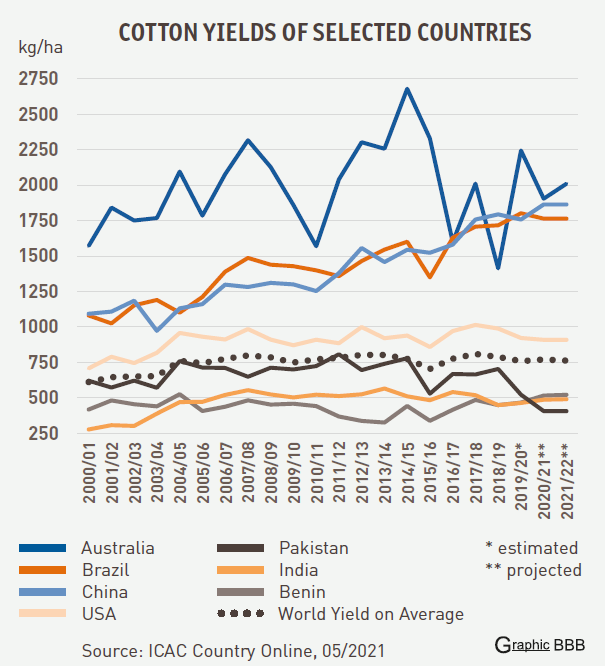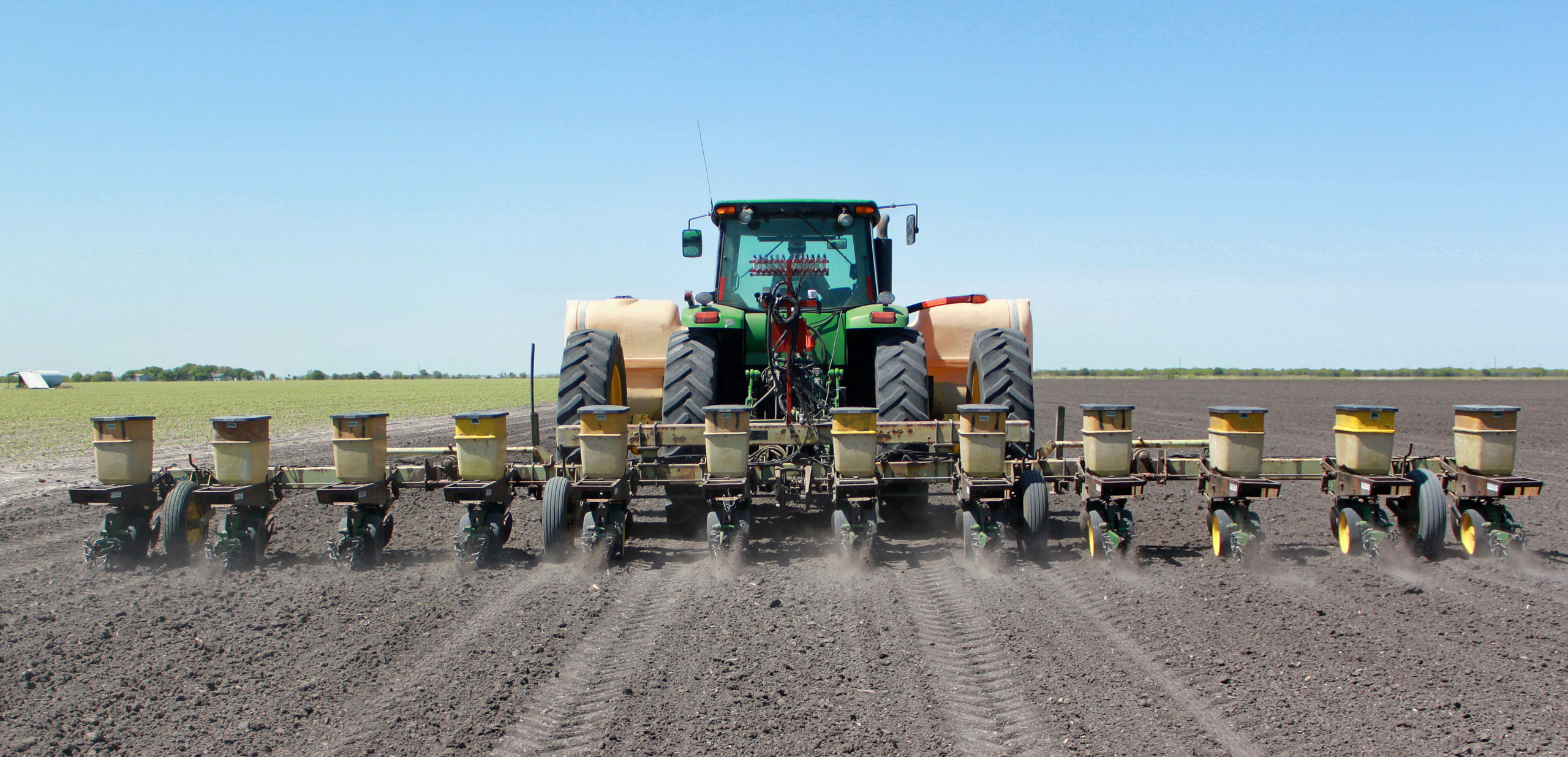 Yields in cotton production register a wide range around the globe. In recent years, farmers’ yields have ranged from around 200 kg per hectare in some African countries to record highs of more than 2,000 kg cotton per hectare in Australia, whereas the average value has fluctuated between 750 and 800 kilograms. Some countries such as Australia, China, Turkey, Brazil, and Israel have been able to increase their cotton yields significantly on average since the 2000s and are constantly harvesting above 1,000 kg per hectare. In many other countries, only small or no cotton yield increases could be observed.
Yields in cotton production register a wide range around the globe. In recent years, farmers’ yields have ranged from around 200 kg per hectare in some African countries to record highs of more than 2,000 kg cotton per hectare in Australia, whereas the average value has fluctuated between 750 and 800 kilograms. Some countries such as Australia, China, Turkey, Brazil, and Israel have been able to increase their cotton yields significantly on average since the 2000s and are constantly harvesting above 1,000 kg per hectare. In many other countries, only small or no cotton yield increases could be observed.
What determines the yield level?
The yield in a field results from a complex mix of different factors that can only be partially influenced and are interdependent. ICAC distinguishes three main factors:
- The genetic potential of a seed variety for cotton production
- Environmental factors interacting with the genetic potential
- Production technologies and agricultural practices.
Genetic potential of a seed variety for cotton production
The seed, i.e. the cotton variety, essentially determines the quality characteristics of the fibre. Yet, the seed is also crucial for the yield to be achieved under ideal conditions in general. The genetic potential forms the basic architecture of the plant as well as properties such as drought resistance or pest resistance. Furthermore, it has considerable influence on the input-use-efficiency. In this regard, it is particularly important whether the economically decisive fibre production respectively fibre quality or the general plant growth is in the centre of attention. ICAC points out that an increase in yield can be achieved by breeding varieties with “compact architecture”. This would also require a canopy management, where excessive vegetative plant growth is contained at a critical stage. It should be clear that the genetics of a cotton variety cannot be considered without environmental factors and corresponding agricultural practices.
Environmental factors
Environmental factors include soil conditions respectively soil health, climate in general, weather conditions at critical stages of plant development, pest infestation as well as precipitation. Cotton needs sufficient sunshine and temperatures of about 30 degrees for ripening. In addition, water supply is necessary at critical points in time for healthy boll development. Temperatures constantly above 40 degrees Celsius are too hot and damage the plant as well. Pakistan, for example, experienced the latter in the last season.
Basically, regional conditions can only be influenced to a limited extent. Nonetheless, they are crucial. They determine whether cotton might grow there as well as the conditions’ support level. Hence, on the one hand, it is important that the bred seeds are adapted to the respective environment. On the other hand, agricultural practices and inputs play a major role for compensating any disadvantages of a location and ensuring the best possible care for the plant.
Production technologies and agricultural practices
Production technology covers a wide range of options in order to provide crops with the best possible care and to achieve the highest possible yields. It starts with seed breeding (see above) and continues with preparatory soil cultivation, sowing methods and planting geometry. In India, Thailand, Bangladesh, Uganda, Sudan, Tanzania, and most African countries, for example, the plants are grown with large interspace. The plant population in these countries is less than 30,000 per hectare. It might not be just by mere chance that the top five countries – Australia, Brazil, China, Mexico, and Turkey – with high yields of more than 1500 kg lint per hectare also possess high plant populations of more than 100,000 plants per hectare.
During the growing season, appropriate nutrient application, pest control and water supply are crucial. It is sometimes appropriate too, as indicated above, to limit leaf growth, so that the fibre production may benefit from the energy. Similarly, technological support by machinery, sensors and data processing can have an impact on yields.

Knowledge and technology access
The complex interaction of all these factors is subject of agronomic research on cotton. The correct application of the findings requires, on the one hand, comprehensive knowledge on interrelations during cotton cultivation and, on the other hand, access to the corresponding technologies and means of production. Moreover, the political framework as well as the financial support for farmers may be further factors with indirect influence on yields. Whether farmers can afford training, purchase inputs or finance irrigation often depends on government support, and not only in poorer countries.
Sources: ICAC Cotton Data Book 2020 as well as The ICAC Recorder 2/2019 and 3/2018

